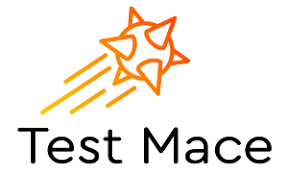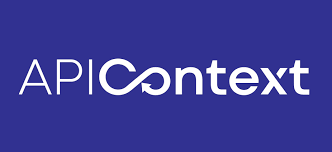Postman has been the go-to API testing tool for years, but it’s not the only game in town anymore. As teams grow and workflows get more complex, some developers find Postman a bit too heavy or restrictive, especially when collaboration, automation, or CI/CD integration become priorities. The good news? There are several tools that keep the good parts of Postman while trimming the bloat or adding smarter ways to test, mock, and share APIs. In this guide, we’ll walk through the best Postman alternatives worth trying, whether you’re after lightweight simplicity, better team features, or more flexible automation.

1. AppFirst
AppFirst can also be seen as a modern Postman alternative for teams that want to simplify their backend workflows beyond just API testing. Instead of focusing solely on sending and monitoring requests, it takes things a step further – automating the entire infrastructure setup that APIs depend on. Developers simply define what their applications need: CPU, database, networking, and Docker image, and AppFirst provisions secure, compliant environments across AWS, Azure, and GCP automatically. There’s no need to write Terraform, YAML, or cloud-specific configuration files.
What makes AppFirst different from tools like Postman is its broader scope. It removes the operational friction of managing environments while keeping observability, logging, and cost tracking built in. It’s designed for developers who want to focus on product logic, not infrastructure overhead. Whether used as a SaaS or self-hosted solution, AppFirst provides the same reliability and compliance controls that DevOps teams would typically build manually, just without the extra steps.
Wichtigste Highlights:
- Acts as a Postman alternative with automated infrastructure provisioning
- Works across AWS, Azure, and GCP with secure, compliant setups
- Built-in logging, monitoring, alerting, and cost visibility
- Centralized auditing and team collaboration features
- Available as SaaS or self-hosted deployment
Good For:
- Teams looking for a Postman alternative that handles infrastructure and deployment
- Developers who want to focus on building features instead of writing infrastructure code
- Organizations standardizing multi-cloud environments without a dedicated DevOps team
Kontakte:
- Website: www.appfirst.dev

2. Insomnia
Insomnia is one of those tools that just makes API work feel smoother. It brings everything together: design, testing, debugging – in one clean space, so you don’t have to juggle a bunch of different apps. It works with REST, GraphQL, gRPC, and even WebSocket APIs, and the setup feels familiar right away. Teams like it because it’s flexible: you can use it locally, sync through Git, or store stuff in the cloud, depending on what fits your workflow.
It’s open-source, which means you can tweak it to your liking, but it still feels modern and polished. Developers appreciate that balance, it’s simple enough for quick tests yet powerful enough for team projects. With features like built-in mocking, secure vaults for credentials, and real collaboration tools, Insomnia keeps everyone on the same page without adding more overhead.
Wichtigste Highlights:
- Works with REST, GraphQL, gRPC, and WebSocket APIs
- Local, Git, and cloud storage support
- Built-in tools for designing, mocking, and debugging APIs
- Extendable with plugins
- Secure credential vaults and team collaboration options
Good For:
- Teams that want a balance between open-source flexibility and team-ready features
- Developers who prefer one tool for designing, testing, and sharing APIs
- Groups already using Git workflows for version control
Kontakte:
- Website: insomnia.rest
- Email: support@insomnia.rest
- Twitter/X: x.com/getinsomnia
3. SoapUI
SoapUI has been around for a while, and it’s still a solid choice for teams that need something dependable for API testing. It comes in two versions: an open-source edition that covers the basics, and ReadyAPI, which adds automation, load testing, and detailed reporting for bigger projects. It’s built to handle multiple protocols: REST, SOAP, GraphQL, JMS, and more, so it works well if your systems are a mix of old and new.
What makes SoapUI practical is how it lets teams create and reuse tests without writing everything from scratch. It’s especially useful for QA or DevOps teams that need consistency across environments or want to automate performance and security testing. While it’s not the flashiest tool, it’s reliable and fits easily into existing CI/CD setups.
Wichtigste Highlights:
- Supports REST, SOAP, GraphQL, JMS, and more
- Available in open-source and enterprise editions
- Covers functional, performance, and security testing
- Allows data-driven and automated test workflows
- Works with common CI/CD integrations
Good For:
- QA or DevOps teams managing large or mixed API environments
- Developers who need to test across multiple protocols
- Organizations focused on structured, repeatable API checks
Kontakte:
- Website: www.soapui.org
- Telefon: +1 617-684-2600
- Email: info@smartbear.com
- Address: SmartBear Software 450 Artisan Way Somerville, MA 02145
- LinkedIn: www.linkedin.com/company/smartbear
- Facebook: www.facebook.com/smartbear
- Instagram: www.instagram.com/smartbear_software
- Twitter/X: x.com/smartbear

4. HTTPie
HTTPie is kind of the friendly alternative to curl, it does the same job but in a way that actually makes sense to humans. It started as a command-line tool and grew into a full API testing platform for terminal, web, and desktop. You don’t need to memorize complicated commands; the syntax reads almost like plain English, which makes testing and debugging a lot faster.
It’s simple, clean, and designed by developers who clearly use it themselves. HTTPie doesn’t try to be an all-in-one suite, but it nails the basics with style. If you just want to send requests, check responses, or quickly play around with APIs without fighting with config files, this tool feels like a breath of fresh air.
Wichtigste Highlights:
- Open-source with CLI, web, and desktop versions
- Easy-to-read command syntax
- Works with RESTful APIs, web services, and HTTP servers
- Lightweight and quick to set up
- Supported by a strong developer community
Good For:
- Developers who prefer working from the terminal
- Teams that need a fast, simple API testing tool
- People who want something easier to use than curl without losing control
Kontakte:
- Website: httpie.io
- Address: 548 Market St, #26464, 94104 San Francisco, CA
- Twitter/X: x.com/httpie

5. Swagger
Swagger gives teams the structure to design, document, and test APIs all in one ecosystem. It’s built around open standards like OpenAPI, AsyncAPI, and JSON Schema, helping developers keep every part of the API lifecycle connected and consistent. Swagger’s tools, such as the Editor, UI, and Codegen, make it easier to define APIs in a way that both humans and machines can understand. This focus on clear specifications keeps projects organized and reduces confusion when teams grow or services evolve.
Rather than being a single product, Swagger works like a toolkit that fits different stages of development. Some teams use it for contract testing and documentation, while others rely on it for governance or functional testing. It’s a familiar choice for anyone who values standards and wants a reliable way to keep their API designs clean and maintainable without adding extra layers of complexity.
Wichtigste Highlights:
- Built around OpenAPI, AsyncAPI, and JSON Schema specifications
- Includes tools for API design, documentation, and testing
- Offers contract and functional testing support
- Provides versioning and governance features through the Swagger suite
- Backed by SmartBear and the open-source community
Good For:
- Teams standardizing API design and documentation across multiple services
- Developers who want to maintain consistency throughout the API lifecycle
- Organizations using OpenAPI-based workflows or SmartBear’s broader ecosystem
Kontakte:
- Website: swagger.io
- Telefon: +1 617-684-2600
- Email: info@smartbear.com
- Address: SmartBear Software 450 Artisan Way Somerville, MA 02145
- LinkedIn: www.linkedin.com/company/smartbear
- Facebook: www.facebook.com/smartbear
- Instagram: www.instagram.com/smartbear_software
- Twitter/X: x.com/smartbear

6. Bruno
Bruno takes a different approach to API clients by keeping everything local and version-controlled. It’s fully open-source and works offline by design, which makes it appealing to developers who want privacy and control over their data. Unlike tools that rely heavily on the cloud, Bruno integrates directly with Git, allowing teams to collaborate through their existing repositories. Collections are stored as readable files, making it easy to review or share them through standard version control workflows.
The idea behind Bruno is simple: provide the essentials without the clutter. It’s lightweight, fast, and built for developers who want flexibility without being tied to a proprietary ecosystem. With no forced accounts, syncs, or dependencies on hosted services, it feels refreshingly straightforward compared to many modern API platforms.
Wichtigste Highlights:
- 100% offline with no cloud sync or external dependencies
- Native Git integration for versioned collaboration
- Open-source and developer-focused
- Simple and lightweight user experience
- Compatible with traditional version control workflows
Good For:
- Developers who prefer working locally and value privacy
- Teams collaborating through Git or self-hosted environments
- Users looking for a fast, minimal API client without cloud lock-in
Kontakte:
- Website: www.usebruno.com
- Email: support@usebruno.com
- LinkedIn: www.linkedin.com/company/usebruno
- Twitter/X: x.com/use_bruno
7. Apache JMeter
Apache JMeter has been a long-time favorite for performance and load testing, especially among teams that want full control over their testing environments. It’s a pure Java application that can simulate heavy traffic on servers, networks, or APIs to see how they behave under different loads. Originally created for web applications, it now supports a wide range of protocols including HTTP, REST, SOAP, FTP, JDBC, and JMS.
What makes JMeter practical is its flexibility. You can run it through a graphical interface for building and debugging test plans, or in CLI mode for large-scale load tests in CI/CD pipelines. It’s extensible through plugins and scripting, which means teams can tailor it to almost any scenario. While it’s not as visually slick as newer tools, it’s still a solid option for developers and testers who care about transparency and fine-tuned performance insights.
Wichtigste Highlights:
- Open-source Java-based performance and load testing tool
- Supports web, database, and protocol-level testing (HTTP, REST, SOAP, etc.)
- Offers GUI and CLI modes for local or distributed testing
- Extensible with plugins and scripting options
- Generates detailed reports and integrates with CI/CD systems
Good For:
- QA and DevOps teams testing performance under heavy loads
- Developers working with various web or backend protocols
- Organizations running automated performance tests within CI/CD pipelines
Kontakte:
- Website: jmeter.apache.org
- Twitter/X: x.com/ApacheJMeter

8. Karate Labs
Karate Labs brings a unified approach to testing by combining API, performance, and UI automation in one open-source platform. It’s designed to help teams test everything from RESTful APIs to gRPC, Kafka, or browser-based workflows without constantly switching tools. Karate’s low-code syntax and built-in support for data-driven testing make it approachable even for non-programmers, while still powerful enough for developers who need deeper integrations.
One of the biggest draws of Karate is how much it consolidates under a single framework. Teams can reuse API tests as performance tests, run them in parallel for faster execution, and integrate directly with tools already in their DevOps pipeline. It’s a practical option for organizations that want to automate testing without splitting it across different products or writing a ton of boilerplate code.
Wichtigste Highlights:
- Unified framework for API, performance, UI, and mock testing
- Low-code setup for faster test creation
- Parallel test execution for improved efficiency
- Supports complex workflows like gRPC, Kafka, and DB testing
- Local-first approach with integrations for major IDEs and Git
Good For:
- Teams wanting one open-source tool for all types of testing
- Developers who need reusable and data-driven test setups
- Organizations looking to automate and scale testing with minimal setup
Kontakte:
- Website: www.karatelabs.io
- Phone: (+44) 7900225047
- Email: info@Karatelabs.io
- Address: 1507 Sandcroft Ln Sugar Land, TX 77479 United States
- LinkedIn: www.linkedin.com/company/karatelabs
- Twitter/X: x.com/getkarate

9. TestMace
TestMace offers a straightforward way to build, run, and automate API tests without heavy scripting. It’s a cross-platform tool that works well for both developers and testers, letting users create requests, define variables, and test complex scenarios through a visual interface. It’s flexible enough for manual API exploration but structured enough for building automated test suites.
Collaboration is another part of its design. Teams can sync projects using built-in cloud storage or version control systems, making it easier to work on shared test cases. Features like syntax highlighting, autocomplete, and rollback options add small quality-of-life improvements that make day-to-day testing a bit less tedious.
Wichtigste Highlights:
- Cross-platform API testing tool with visual editor
- Works with variables, authentication, and request scenarios
- Supports collaboration via cloud or version control
- Includes autocomplete, syntax highlighting, and undo/redo features
- No-code and code-based test creation options
Good For:
- Teams that want an easy, graphical way to build and run API tests
- Testers who prefer visual workflows over scripting
- Developers needing lightweight collaboration features
Kontakte:
- Website: testmace.com
- Email: client@testmace.com
- Facebook: www.facebook.com/testmace
- Instagram: www.instagram.com/testmace

10. Hoppscotch
Hoppscotch is an open-source API client built around speed, simplicity, and accessibility. It runs directly in the browser, so there’s no installation required, and users can start sending requests or building collections within seconds. It supports REST, GraphQL, WebSocket, and other protocols, offering a clean and distraction-free interface that makes API testing feel less mechanical.
What stands out about Hoppscotch is how lightweight it is compared to many desktop clients. It’s ideal for quick testing or everyday development tasks, especially for people who don’t need advanced enterprise features. Teams can still collaborate by sharing collections and environments, but the experience stays fast and uncluttered.
Wichtigste Highlights:
- Open-source, browser-based API client
- Supports REST, GraphQL, and WebSocket testing
- No installation required, fast and lightweight
- Allows environment and collection sharing
- Clean, minimal interface focused on simplicity
Good For:
- Developers who want a fast, browser-based API tool
- Teams doing quick tests or lightweight collaboration
- Users looking for an easy Postman alternative without setup hassles
Kontakte:
- Website: hoppscotch.io

11. Firecamp
Firecamp is an open-source API development platform built for teams that want a clean, all-in-one workspace without extra clutter. It supports REST, GraphQL, WebSocket, and other protocols through dedicated “playgrounds,” letting developers test and iterate faster. Everything is organized into collections that can be shared across teams, so testing, debugging, and documenting APIs happens in one place. The interface is simple and lightweight, yet it covers most of what development teams need for daily API work.
Beyond basic testing, Firecamp brings in features like real-time collaboration, built-in documentation publishing, and test automation through its CLI and CI/CD support. You can run collections locally or directly inside the platform, use environment variables for dynamic testing, and switch between web and desktop apps depending on your workflow. It’s a practical, community-driven alternative to Postman that keeps collaboration easy while staying open and flexible.
Wichtigste Highlights:
- Open-source platform for REST, GraphQL, WebSocket, and more
- Clean interface with multi-protocol API playgrounds
- Team collaboration with shared workspaces and live syncing
- Built-in API documentation and test runner
- CLI and CI/CD integration for automated testing
Good For:
- Development teams that want an open-source, collaborative API client
- Engineers working with multiple API protocols
- Users who prefer a simple, unified tool for testing, documenting, and automating APIs
Kontakte:
- Website: firecamp.io
- Twitter/X: x.com/FirecampDev

12. Apidog
Apidog is kind of like if you took Postman, Swagger, and a few other tools and rolled them into one. It’s built around a design-first idea, meaning you can sketch out and refine your API before anyone starts coding. The platform covers everything from designing and debugging to testing and documenting your APIs – all in the same place. You can visually build requests, run live tests, mock endpoints for your front-end team, and keep docs automatically up to date as things change.
What makes Apidog feel practical is how it ties all these steps together. Instead of jumping between separate tools for specs, testing, and docs, everything stays synced. It keeps your design consistent and your workflow cleaner, especially if your team already uses OpenAPI. It’s not flashy, just a straightforward way to manage the whole API lifecycle without reinventing your setup every few months.
Wichtigste Highlights:
- Combines API design, testing, mocking, and documentation
- Visual design-first workflow with OpenAPI support
- Low-code automated test creation
- Mock servers and live testing built in
- CI/CD-friendly with easy spec validation
Good For:
- Teams that want a single Postman alternative for design and testing
- Developers working with spec-driven development
- QA or DevOps teams who like automated, low-code testing setups
Kontakte:
- Website: apidog.com
- Email: support@apidog.com
- Twitter/X: x.com/ApidogHQ

13. Assertible
Assertible is all about reliability – it focuses on making sure your APIs actually work after every deploy. It automates the kind of QA checks teams usually run manually, and it’s easy to plug into existing workflows. You can sync your tests with OpenAPI, Swagger, or Postman collections, so when your specs change, your tests update too. It runs across staging, production, or wherever you need coverage, and it integrates nicely with GitHub or Slack to keep your team in the loop.
It’s not trying to be a full API design tool, just a simple, dependable way to make sure things don’t break when you ship. If you’ve ever spent time re-testing endpoints after a push, this saves a ton of that effort. The interface is simple, and the setup doesn’t require hours of configuration, it’s built for teams that care more about catching bugs than customizing dashboards.
Wichtigste Highlights:
- Automates post-deployment and uptime testing
- Syncs with OpenAPI, Swagger, and Postman collections
- Runs across different environments
- Integrates with GitHub, Slack, and CI/CD tools
- Custom alerts for failed tests or downtime
Good For:
- Teams that want continuous, automated API monitoring
- Developers who need reliable post-deploy checks
- QA engineers integrating testing into pipelines
Kontakte:
- Website: assertible.com
- LinkedIn: www.linkedin.com/company/assertible
- Facebook: www.facebook.com/Assertible
- Twitter/X: x.com/AssertibleApp

14. Katalon
Katalon takes testing beyond just APIs – it handles web, mobile, desktop, and more, all from one place. It’s meant for teams that want to automate everything without juggling multiple tools. You can write tests with code if you want full control, or use its low-code editor to build cases faster. It even uses AI to help generate and maintain test scripts, which is handy if you’re working on a big project with constant updates.
It also fits well into larger DevOps setups. Katalon plays nicely with tools like Jira, Jenkins, and GitHub, so it blends into your workflow instead of forcing new habits. You can manage test planning, execution, and reporting all in one spot. It’s not a simple plug-and-play tool like Postman, but if you’re looking to grow into something that supports broader automation, it’s a natural next step.
Wichtigste Highlights:
- Covers API, web, mobile, and desktop testing
- Low-code and script-based test creation
- Built-in AI for faster test writing and maintenance
- Works with major CI/CD and project tools
- Centralized test management through TestOps
Good For:
- Teams scaling automation across multiple app types
- QA engineers using both low-code and full-code workflows
- Enterprises that want test orchestration built into their pipeline
Kontakte:
- Website: katalon.com
- Email: business@katalon.com
- Address: 1720 Peachtree Street NW, Suite 870, Atlanta, GA 30309
- LinkedIn: www.linkedin.com/company/katalon
- Facebook: www.facebook.com/KatalonPlatform
- Twitter/X: x.com/KatalonPlatform

15. Thunder Client
Thunder Client is a lightweight API testing tool built right into VS Code, a handy alternative for anyone who doesn’t want to leave their coding environment just to send a few requests. It’s simple, fast, and doesn’t rely on the cloud, which makes it great for developers who like to keep things local. You can organize your requests into collections, manage environments, and sync with Git to collaborate with teammates without adding extra tools to your workflow.
It’s not overloaded with features, but that’s kind of the point. Thunder Client focuses on doing the basics well – testing APIs, storing data locally, and running tests through a clear, scriptless interface. It also works with CI/CD pipelines and includes a CLI for automation. For many developers, it’s a comfortable, no-fuss Postman alternative that fits naturally into daily coding routines.
Wichtigste Highlights:
- Built as a VS Code extension for easy access
- Lightweight and fast REST API client
- Local data storage, no external syncing
- Git integration for collaboration
- CLI support for CI/CD workflows
- Scriptless testing and AI integration features
Good For:
- Developers who prefer testing directly inside VS Code
- Teams looking for a fast, local Postman alternative
- Users who need Git-based collaboration without cloud dependencies
Kontakte:
- Website: www.thunderclient.com:
- LinkedIn: www.linkedin.com/company/thunderclient
- Twitter/X: x.com/thunder_client

16. BlazeMeter
BlazeMeter focuses on large-scale, automated testing for teams that need to go beyond basic API checks. Originally built on top of Apache JMeter, it now supports functional, performance, and continuous testing all in one place. It’s built for teams that care about reliability under load – simulating real-world traffic, running service virtualization, and monitoring APIs at scale. With AI-driven test data and reporting, BlazeMeter helps speed up testing cycles while improving accuracy across complex systems.
It’s not the tool you open for a quick manual request, it’s more of an enterprise-grade testing hub. BlazeMeter integrates with tools like Jenkins and GitHub, making it fit neatly into CI/CD setups. Teams use it to handle heavy performance testing, identify bottlenecks, and track reliability through production. For anyone running complex applications or large-scale services, it’s a strong alternative to Postman with a focus on automation and performance insight.
Wichtigste Highlights:
- Built for large-scale performance and functional testing
- Based on and compatible with Apache JMeter
- AI-powered test generation and analysis
- Service virtualization and API monitoring features
- Integrates with Jenkins, GitHub, and CI/CD pipelines
Good For:
- Enterprise QA or DevOps teams handling heavy load testing
- Organizations focused on reliability and performance
- Teams automating large-scale functional and API tests
Kontakte:
- Website: www.blazemeter.com
- LinkedIn: www.linkedin.com/company/perforce
- Twitter/X: x.com/perforce

17. APIContext
APIContext is geared toward visibility and monitoring rather than pure testing. It gives teams a full view of how APIs perform in real-world conditions – tracking uptime, latency, and compliance against OpenAPI standards. Beyond just testing endpoints, it helps identify performance issues, monitor SLAs, and catch potential security or compliance gaps before they affect production.
The platform works end-to-end, from testing and monitoring to risk assessment. Teams use it to track both internal and public APIs, ensuring they stay reliable and compliant across regions and services. It’s especially useful for enterprises where maintaining consistent API performance and governance is a top priority. In that sense, APIContext isn’t trying to replace Postman’s UI testing, it extends the idea to operational reliability and long-term monitoring.
Wichtigste Highlights:
- End-to-end API performance, compliance, and monitoring
- Supports OpenAPI conformance testing
- Real-time alerting and SLA tracking
- Advanced dashboards for latency and performance insights
- Focused on security and regulatory visibility
Good For:
- Enterprises managing complex API ecosystems
- Teams focused on performance monitoring and compliance
- Developers who need continuous visibility beyond functional tests
Kontakte:
- Website: apicontext.com
- LinkedIn: www.linkedin.com/company/apicontext
- Twitter/X: x.com/apicontext

18. Stoplight
Stoplight is built around a simple idea – designing great APIs should be easier. It gives teams a design-first environment to plan, document, and build APIs before anyone starts coding. The platform supports OpenAPI standards and makes it easy to reuse models and components, so teams can stay consistent across projects. It’s not just for individual developers either,Stoplight helps organizations manage large API portfolios with shared design systems and governance tools.
Because it focuses on design rather than pure testing, Stoplight stands out as a Postman alternative for teams that want to define clean, reusable API specs. You can visualize your endpoints, keep documentation automatically updated, and connect your designs directly to implementation. It’s especially useful for teams working across multiple services or departments where consistency and quality matter as much as speed.
Wichtigste Highlights:
- Design-first platform for API creation and documentation
- Supports OpenAPI standards with reusable components
- Centralized management for large API portfolios
- Built-in governance tools to maintain consistency
- Visual workflow connecting design and development
Good For:
- Teams that prioritize design-first API development
- Organizations managing multiple APIs or microservices
- Developers looking to unify design, documentation, and collaboration workflows
Kontakte:
- Website: stoplight.io
- Phone: tracy@broadpr.com
- LinkedIn: www.linkedin.com/company/stoplight
- Facebook: www.facebook.com/stoplightio
- Twitter/X: x.com/stoplightio

19. HyperTest
HyperTest takes a different approach to API testing – it uses AI to automatically generate integration tests from real traffic. Instead of manually writing tests or maintaining mocks, it records how your APIs behave in production-like environments and creates tests based on that data. It’s designed for backend and microservice-heavy systems, where dependencies can be complex and traditional unit testing doesn’t catch everything.
The platform runs these tests in your CI pipeline, detects bugs, and even traces failing requests across multiple services to pinpoint the root cause. In practice, it helps developers catch issues before they hit production without writing much code. For teams that struggle with maintaining tests or debugging service-to-service failures, HyperTest can serve as a smart, automated Postman alternative for integration-level coverage.
Wichtigste Highlights:
- AI-driven integration testing based on real API traffic
- No manual test creation or mocking required
- Works across APIs, databases, and message queues
- Distributed tracing to debug across microservices
- CI pipeline integration for continuous validation
Good For:
- Backend teams running microservices or complex integrations
- Developers who want automated, self-updating tests
- Engineering teams looking to improve reliability without heavy manual testing
Kontakte:
- Website: www.hypertest.co
- Phone: +1 718 618-4338
- Email: connect@hypertest.co
- Address: 95 Third Street 2nd Floor, 94103 San Francisco, California, USA
- LinkedIn: www.linkedin.com/company/hyper-test
- Twitter/X: x.com/hypertest_inc

20. LoadNinja
LoadNinja is focused on load and performance testing rather than day-to-day API calls. It allows teams to create and run web or API load tests using real browsers, without writing any code. Its “record and replay” feature lets you simulate real user behavior, making it easier to spot performance issues and bottlenecks. Even non-technical team members can build and execute tests in minutes.
Compared to Postman, LoadNinja’s strength lies in realism and scale. It runs tests through the cloud, integrates with CI/CD tools, and provides detailed analytics to track response times, throughput, and performance trends. It’s a solid choice for teams that want to ensure their applications hold up under real-world conditions without needing to manage complex scripts or infrastructure.
Wichtigste Highlights:
- No-code load and performance testing with real browsers
- Record-and-playback feature for fast test creation
- Cloud-based testing for scalability
- CI/CD and reporting integration
- Helps identify performance bottlenecks in production-like setups
Good For:
- Teams performing large-scale performance or stress testing
- QA engineers needing browser-based load simulations
- Organizations verifying real-world API performance before release
Kontakte:
- Website: loadninja.com
- Telefon: +1 617-684-2600
- Email: info@smartbear.com
- Address: SmartBear Software 450 Artisan Way Somerville, MA 02145
- LinkedIn: www.linkedin.com/company/smartbear
- Facebook: www.facebook.com/smartbear
- Instagram: www.instagram.com/smartbear_software
- Twitter/X: x.com/smartbear

21. cURL
cURL is one of those tools that’s been around forever, and for good reason. It’s a command-line utility (and also a library called libcurl) used to transfer data across just about any internet protocol you can name. Developers use it daily for testing APIs, downloading files, or automating data transfers. It supports everything from HTTP and HTTPS to FTP, SFTP, MQTT, and even modern features like HTTP/3, QUIC, and DNS-over-HTTPS.
What makes cURL different from graphical Postman alternatives is its universality. It runs everywhere – in scripts, servers, IoT devices, even cars and TVs. It’s open source, lightweight, and endlessly customizable, which explains why so many tools and services quietly depend on it behind the scenes. If you prefer command-line control or need to automate large-scale transfers, cURL is the tried-and-true option that just keeps working.
Wichtigste Highlights:
- Supports a wide range of protocols including HTTP, FTP, SFTP, and MQTT
- Works via command line or through the libcurl library in applications
- Offers advanced features like HTTP/3, QUIC, and TLS 1.3
- Open source and widely supported across platforms
- Used in millions of systems, from servers to embedded devices
Good For:
- Developers and sysadmins comfortable with command-line tools
- Automating API requests or data transfers
- Integrating HTTP functionality into custom applications
- Teams that value stability and open-source flexibility over UI-based testing
Kontakte:
- Website: curl.se
Schlussfolgerung
Finding the right Postman alternative really comes down to how your team works. Some developers want lightweight tools that open instantly and stay out of the way. Others need deeper collaboration, built-in automation, or tighter control over how tests connect to deployment. The good thing is there’s no shortage of solid options – from open-source clients like Bruno, Insomnia, or Hoppscotch to more comprehensive platforms like Karate or Firecamp.
What’s clear is that API testing has moved beyond sending requests and checking responses. Teams now care just as much about speed, transparency, and workflow fit. Whether you’re chasing better performance, offline control, or a cleaner interface, one of these alternatives will fit naturally into your stack without forcing you to change how you build.


